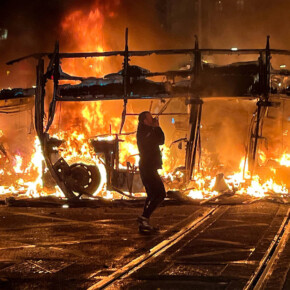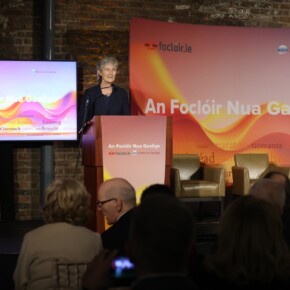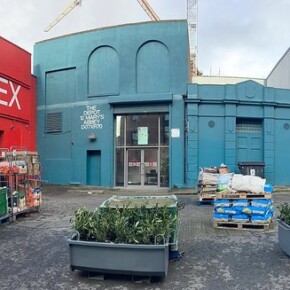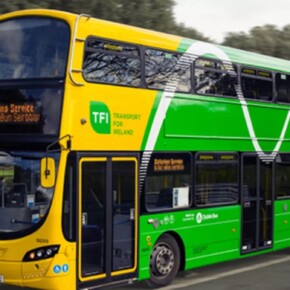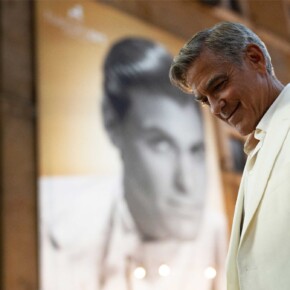Remembering the importance of Moore Street
Dublin People 30 Aug 2014MOORE Street in the heart of Dublin City Centre has carved a position of honour in the pages of Ireland’s revolutionary history.
During the 1916 Rising, O’Hanlon’s Fish Shop, No. 16 Moore Street, became the final headquarters of the Provisional Government of the Irish Republic.
On Friday April 28, with the GPO in flames, the Provisional Government held a war council and decided the position was untenable. The Republican leaders decided to fight their way towards Ned Daly’s Garrison, securely encamped at the Four Courts.
The plan was to escape down Moore Street to Messer’s Williams and Woods soap and sweet manufacturers on Great Britain Street (now Parnell Street), where a temporary headquarters could be established. From here the Republican Army would clear a way to the Four Courts.
Before the GPO could be evacuated, an escape route had to be established between the post office and Williams and Woods.
‘The’ O’Rahilly, volunteered to lead a detachment of republican soldiers to secure a route. After final instructions from Pearse and Connolly, O’Rahilly led his party into Henry Street.
Splitting into two columns the republicans charged up either side of Moore Street, where the British immediately opened fire with a machine gun, positioned on a barricade at the opposite end of the street. O’Rahilly and a number of his men were hit. Sheltering in a doorway, O’Rahilly overheard the British point out his position and made a final charge across Moore Street in the direction of Moore Lane. He was shot again, this time fatally and gave his life for the Republic.
Back at the GPO, Sean McLoughlin, a 15-year-old volunteer, overheard the plan to establish a new headquarters at Williams and Woods. McLoughlin informed Pearse that Great Britain Street had been occupied by the British for several days, and suggested that the Garrison should instead fight their way down Henry Street.
Following a short consultation with the other leaders Pearse agreed. McLoughlin rushed out of the GPO and into Henry Place, in an attempt to save O’Rahilly from the slaughter.
McLoughlin arrived in Moore Lane just as O’Rahilly was fatally wounded. Turning back towards the GPO, the young volunteer realised that in the confusion caused by the change of plan, the rest of the Garrison had followed him.
The British, with another barricade at the top of Moore Lane, opened fire. Quickly taking control, McLoughlin ordered that a barricade be built across Moore Lane and that the republicans should take cover in the surrounding houses.
The closest house was No. 10 Moore Street. This belonged to the Cogan family. Once in the safety of Cogan’s, Pearse and Connolly who had been the last to leave the GPO, called another War Council.
The leaders agreed that with Connolly’s health failing, a new commander must be appointed. Connolly insisted that Sean McLoughlin, who had proved a tower of strength, should be given the position.
On Saturday morning, the Republican Army began tunnelling through the houses from No. 10-25 Moore Street, planning to overrun the British barricade.
A temporary headquarters was established in No.16 as the tunnelling continued. During a meeting of the War Council, the leaders agreed to continue the fight. However, as Pearse looked out the window of No. 16, he saw a local publican and his family, who were attempting to leave the area under a white flag, gunned down by the British. Horrified, Pearse insisted that the Rising must be ended to save civilian life. Some of the other leaders disagreed, but as the President of the Republic, Pearse had the final say.
Elizabeth O’Farrell, a stalwart member of the Irish Citizen Army and Cumann na mBan, whose courage had impressed all around her, was chosen to approach the British. As the young nurse made her way towards the British barricade she was fired upon. At the barricade, O’Farrell proudly announced that,
‘the President of the Irish Republic would like to treat for terms’.
The British, however, refused to grant any terms. Only unconditional surrender was acceptable.
Knowing that their actions had ensured that there would be another day for Ireland, the leaders reluctantly agreed.
Pearse accompanied O’Farrell back to the British lines and surrendered his sword. Word of the surrender was sent to the other Garrisons across the city. The Rising was over.
Although defeated, the Rising sparked a fire that continued to rage for independence. Today, Moore Street remains an important historic monument to the heroes of 1916.
?¢Daithà Ã? Riain is a Dublin based historian with a specific interest in social history and Ireland’s revolutionary period.


